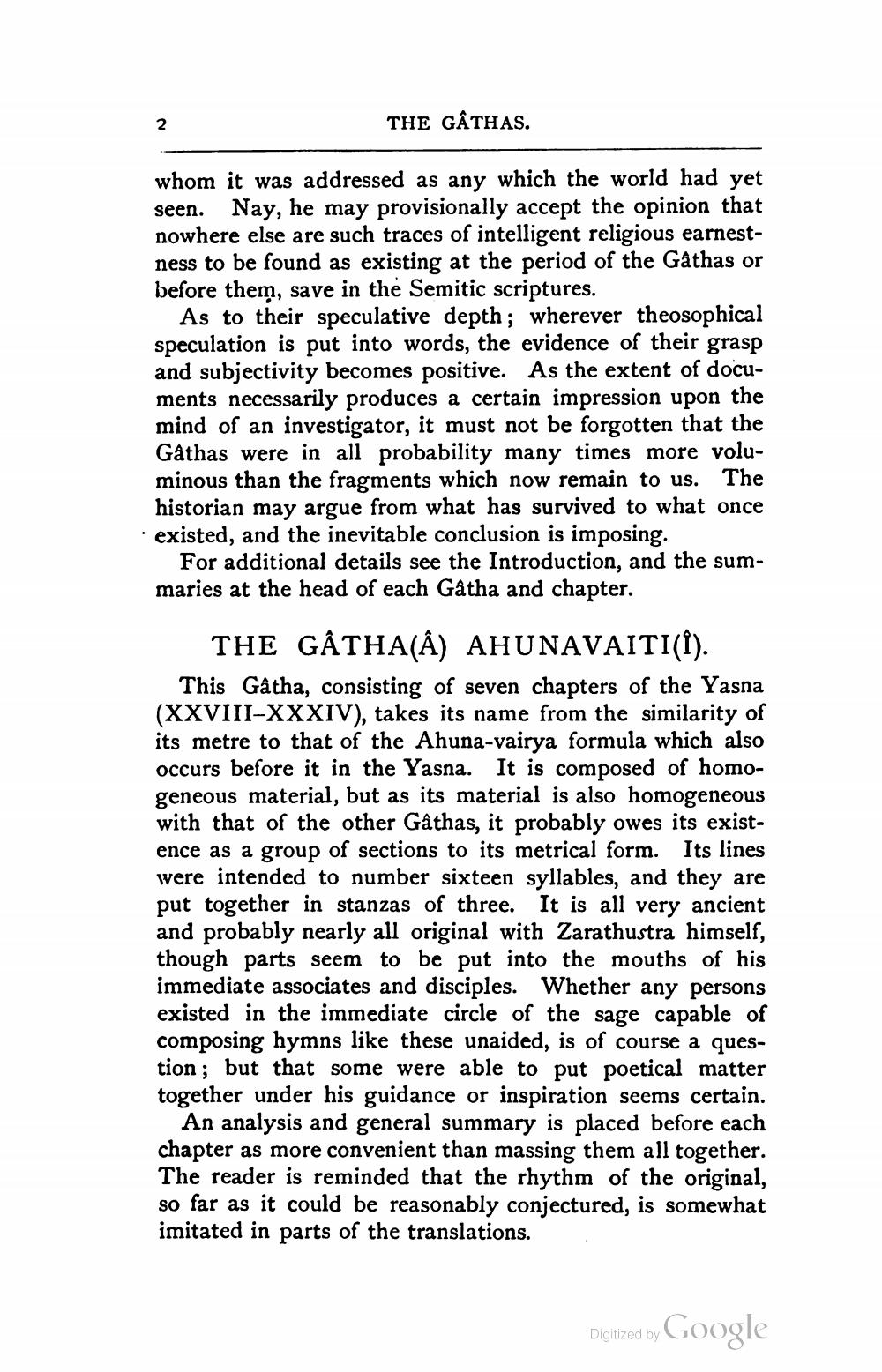________________
THE GÂTHAS.
whom it was addressed as any which the world had yet seen. Nay, he may provisionally accept the opinion that nowhere else are such traces of intelligent religious earnestness to be found as existing at the period of the Gathas or before them, save in the Semitic scriptures.
As to their speculative depth; wherever theosophical speculation is put into words, the evidence of their grasp and subjectivity becomes positive. As the extent of documents necessarily produces a certain impression upon the mind of an investigator, it must not be forgotten that the Gathas were in all probability many times more voluminous than the fragments which now remain to us. The historian may argue from what has survived to what once existed, and the inevitable conclusion is imposing.
For additional details see the Introduction, and the summaries at the head of each Gåtha and chapter.
THE GÅTHATÂ) AHUNAVAITI(I). This Gâtha, consisting of seven chapters of the Yasna (XXVIII-XXXIV), takes its name from the similarity of its metre to that of the Ahuna-vairya formula which also occurs before it in the Yasna. It is composed of homogeneous material, but as its material is also homogeneous with that of the other Gâthas, it probably owes its existence as a group of sections to its metrical form. Its lines were intended to number sixteen syllables, and they are put together in stanzas of three. It is all very ancient and probably nearly all original with Zarathustra himself, though parts seem to be put into the mouths of his immediate associates and disciples. Whether any persons existed in the immediate circle of the sage capable of composing hymns like these unaided, is of course a question; but that some were able to put poetical matter together under his guidance or inspiration seems certain.
An analysis and general summary is placed before each chapter as more convenient than massing them all together. The reader is reminded that the rhythm of the original, so far as it could be reasonably conjectured, is somewhat imitated in parts of the translations.
Digitized by
Digitized by Google




